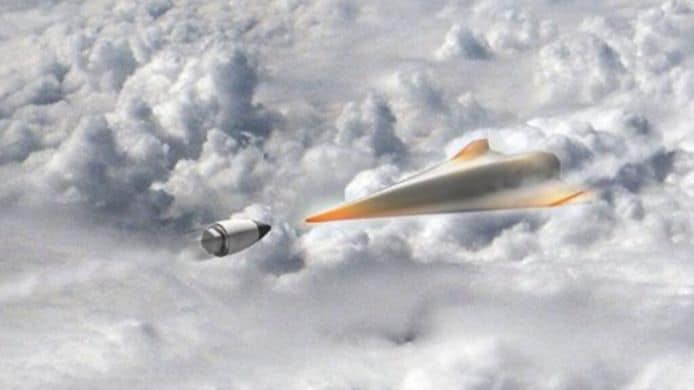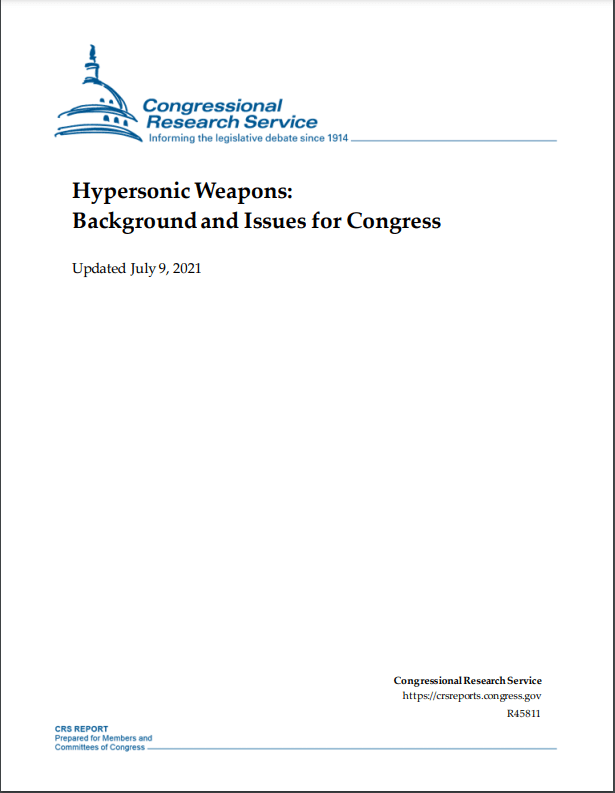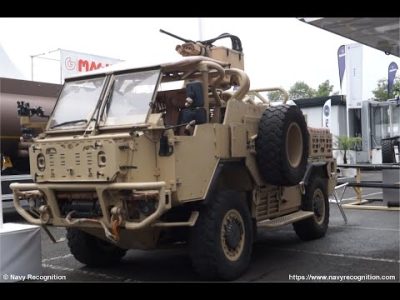Published on 07/15/2021 – Last Updated on 07/15/2021 by OTC
The updated Congressional Research Service report for “Hypersonic Weapons: Background and Issues for Congress” was published on July 9, 2021. The summary of the report as follows.
Hypersonic Weapons
The United States has actively pursued the development of hypersonic weapons—maneuvering weapons that fly at speeds of at least Mach 5—as a part of its conventional prompt global strike program since the early 2000s. In recent years, the United States
has focused such efforts on developing hypersonic glide vehicles, which are launched from a rocket before gliding to a target, and hypersonic cruise missiles, which are powered by high-speed, air-breathing engines during flight. As Vice Chairman of the Joint Chiefs of Staff and former Commander of U.S. Strategic Command General John Hyten has stated, these weapons could enable “responsive, long-range, strike options against distant, defended, and/or time-critical threats [such as road-mobile missiles] when other forces are unavailable, denied access, or not preferred.” Critics, on the other hand, contend that hypersonic weapons lack defined mission requirements, contribute little to U.S. military capability, and are unnecessary for deterrence.
Funding for hypersonic weapons has been relatively restrained in the past; however, both the Pentagon and Congress have shown a growing interest in pursuing the development and near-term deployment of hypersonic systems. This is due, in part, to the advances in these technologies in Russia and China, both of which have a number of hypersonic weapons programs and have likely fielded operational hypersonic glide vehicles— potentially armed with nuclear warheads. Most U.S. hypersonic weapons, in contrast to those in Russia and China, are not being designed for use with a nuclear warhead. As a result, U.S. hypersonic weapons will likely require greater accuracy and will be more technically challenging to develop than nuclear-armed Chinese and Russian systems.
The Pentagon’s FY2022 budget request for hypersonic research is $3.8 billion—up from $3.2 billion in the FY2021 request. The Missile Defense Agency additionally requested $247.9 million for hypersonic defense. At present, the Department of Defense (DOD) has not established any programs of record for hypersonic weapons, suggesting that it may not have approved either mission requirements for the systems or long-term funding plans.
Indeed, as Principal Director for Hypersonics (Office of the Under Secretary of Defense for Research and Engineering) Mike White has stated, DOD has not yet made a decision to acquire hypersonic weapons and is instead developing prototypes to assist in the evaluation of potential weapon system concepts and mission sets.

As Congress reviews the Pentagon’s plans for U.S. hypersonic weapons programs, it might consider questions about the rationale for hypersonic weapons, their expected costs, and their implications for strategic stability and arms control. Potential questions include the following:
- What mission(s) will hypersonic weapons be used for? Are hypersonic weapons the most cost-effective means of executing these potential missions? How will they be incorporated into joint operational doctrine and concepts?
- Given the lack of defined mission requirements for hypersonic weapons, how should Congress evaluate funding requests for hypersonic weapons programs or the balance of funding requests for hypersonic weapons programs, enabling technologies, and supporting test infrastructure? Is an acceleration of research on hypersonic weapons, enabling technologies, or hypersonic missile defense options both necessary and technologically feasible?
- How, if at all, will the fielding of hypersonic weapons affect strategic stability?
- Is there a need for risk-mitigation measures, such as expanding New START, negotiating new multilateral arms control agreements, or undertaking transparency and confidence-building activities?
Click on the image to see the whole report:

Check out Naval Library App to learn more about the specifications of Naval Missiles.
















Comments